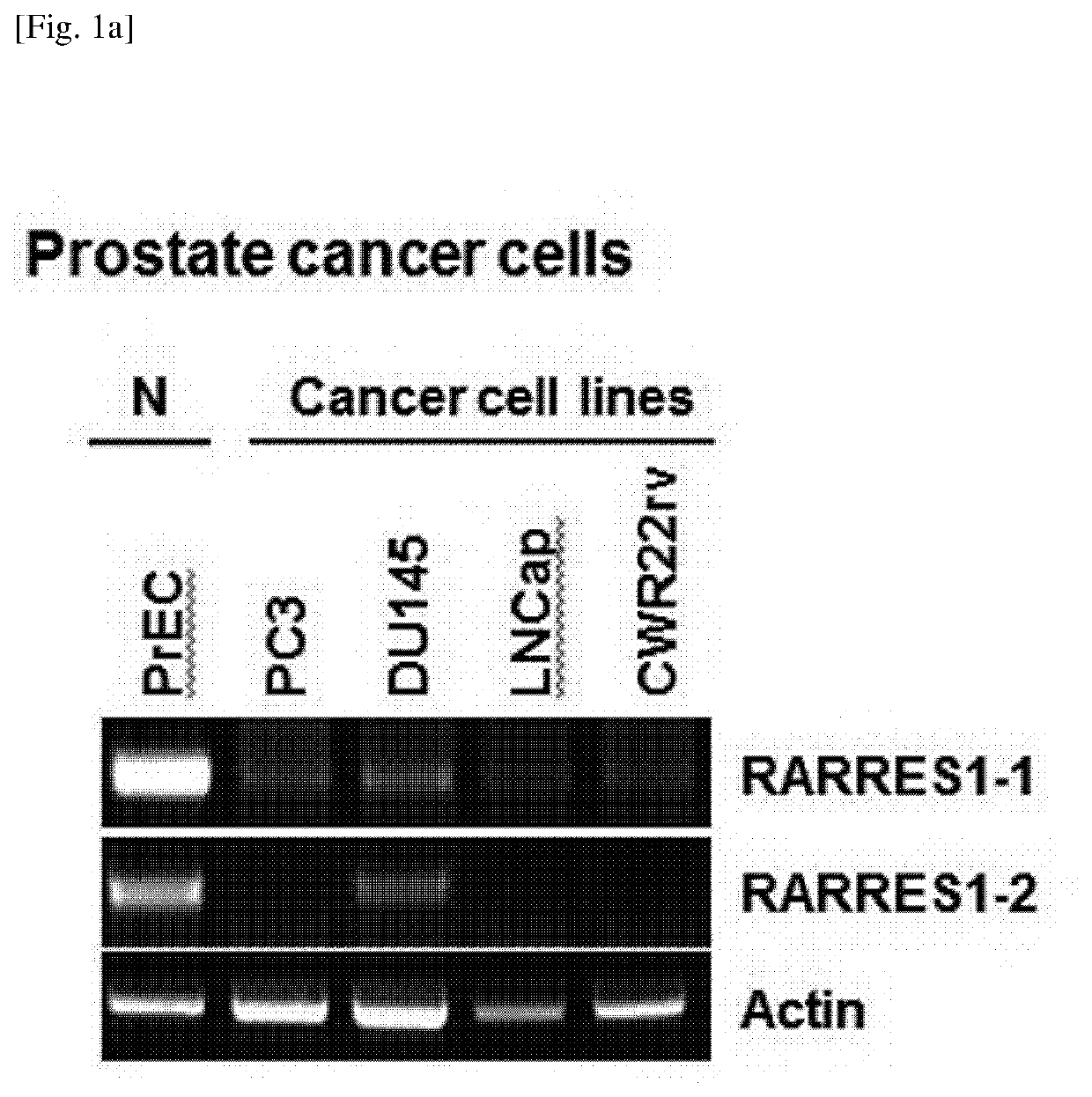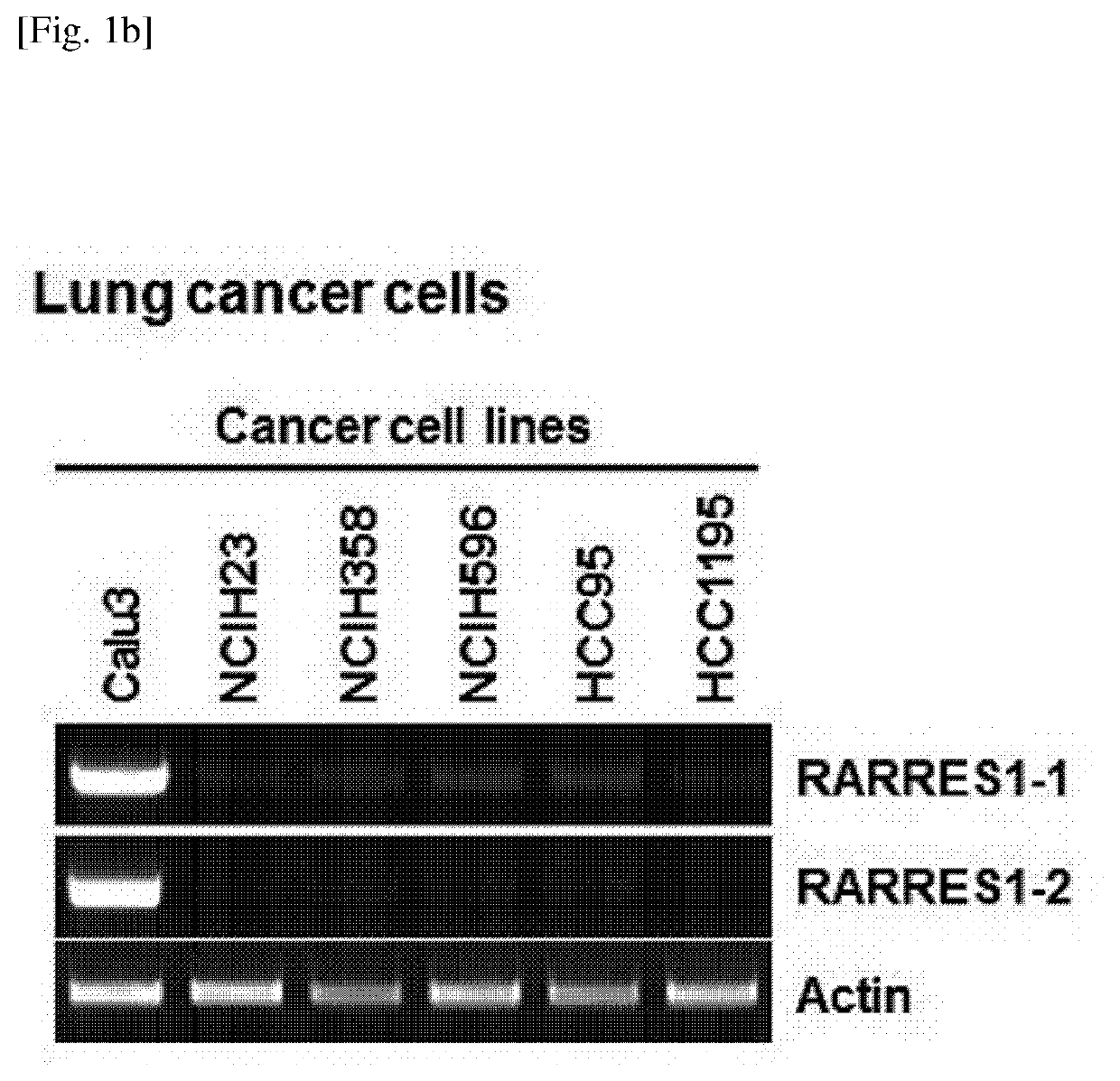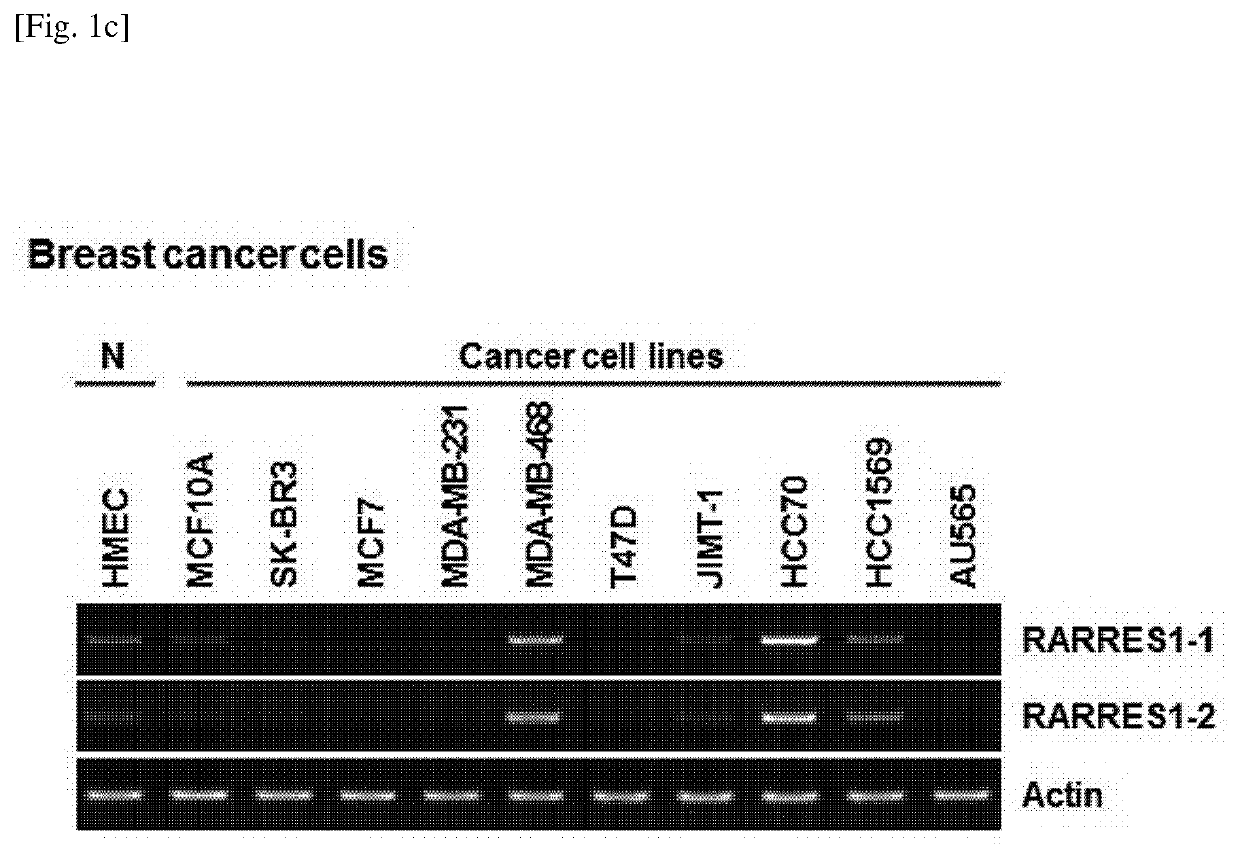A method for screening a therapeutic agent for cancer using binding inhibitor of cyclin-dependent kinase 1 (CDK1)-cyclin b1 and retinoic acid receptor responder 1 (rarres1) gene knockout animal model
a cancer and cdk1 technology, applied in the field of screening for a cancer therapeutic agent, can solve the problems of inconvenient diagnosis, limited range, destruction or modification of existing structures, etc., and achieve the effects of increasing the binding degree, promoting the degradation of these proteins, and reducing the binding degr
- Summary
- Abstract
- Description
- Claims
- Application Information
AI Technical Summary
Benefits of technology
Problems solved by technology
Method used
Image
Examples
example 1
tal Preparation and Experimental Methods
[0209]1-1. Cells and Transfection
[0210]Human mammalian epithelial cells were cultured in a mammalian epithelial cell medium (ScienCell Research Laboratories, Carlsbad, Calif., USA) supplemented with 10% (v / v) fetal bovine serum (FBS), 10,000 IU / ml of penicillin, 10,000 μg / ml of streptomycin, and a mammalian epithelial cell growth supplement (ScienCell). All other cells were grown in a medium supplemented with 10% (v / v) fetal bovine serum (FBS), 10,000 IU / ml of penicillin, 10,000 μg / ml of streptomycin, and sodium pyruvate at 37° C. in a humidified environment consisting of 95% air and 5% CO2. For transfection with plasmid DNA according to Example 1-3 or siRNA according to Example 1-4, Lipofectamine LTX / PLUS (Invitrogen, Carlsbad, USA) and Lipofectamine2000 (Invitrogen) were respectively used according to the manufacturers' instructions.
[0211]1-2. RT-PCR
[0212]Total RNA was extracted from human cancer cell lines including prostate cancer, lung ca...
example 2
ion of RARRES1 by Hypermethylation in Human Cancer Cell Lines
[0230]Expression levels of RARRES1 isoforms in human normal cells and cancer cell lines including prostate cancer, lung cancer, and breast cancer were evaluated by RT-PCR according to Example 1-2. The results thereof, which coincided with previously published data, showed that RARRES1 expression was silenced in most of the tested human cancers, when compared to the normal cells. RARRES1 expression was shown at a level higher than that in normal cells or other cancers in some of the cancer cells in the lung (1 / 6; Calu3) and the breast (3 / 11; MDA-MB-468, HCC70, and HCC1569). The mRNA expression patterns of both RARRES1 transcript variants were very similar in all the human cancer cell lines (see FIG. 1A to FIG. 1C).
[0231]To determine whether promoter methylation was associated with the silencing of the RARRES1 expression in cancer cells, cells were treated with 5-aza-2′-deoxycytidine (5-aza-2-dC; 5, 25, and 100 uM) as an inh...
example 3
s Putative Tumor Suppressor Gene
[0233]Promoter hypermethylation may be a mechanism for inactivating tumor suppressor genes in cancer. As described in Example 2, it is assumed that RARRES1 acts as a tumor suppressor gene, based on the results of FIGS. 1A to 1C and 2A to 2C. To test this hypothesis, the effect of RARRES1 on cell proliferation according to Example 1-5 in breast cancer cell lines MDA-MB-231 and JIMT-1 measured by MTT cell proliferation assay was examined.
[0234]Both or each of RARRES1 transcript variants were specifically expressed in MDAMB-231 cells exhibiting a low mRNA level of RARRES1, and cell growth was analyzed for 5 days. Cancer cell growth was gradually inhibited for a certain period of time after transient transfection with both or each of RARRES1 isoform expression vectors according to the method of Example 1-1 (see FIG. 3A). In contrast, RARRES1 mRNA expression was reduced when JIMT-1 cells were transfected, using the method of Example 1-1, with a specific si...
PUM
 Login to View More
Login to View More Abstract
Description
Claims
Application Information
 Login to View More
Login to View More - R&D
- Intellectual Property
- Life Sciences
- Materials
- Tech Scout
- Unparalleled Data Quality
- Higher Quality Content
- 60% Fewer Hallucinations
Browse by: Latest US Patents, China's latest patents, Technical Efficacy Thesaurus, Application Domain, Technology Topic, Popular Technical Reports.
© 2025 PatSnap. All rights reserved.Legal|Privacy policy|Modern Slavery Act Transparency Statement|Sitemap|About US| Contact US: help@patsnap.com



